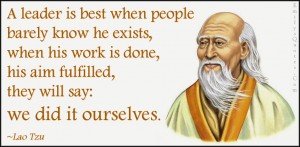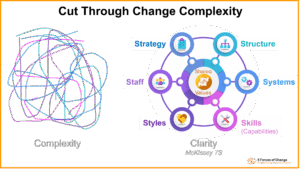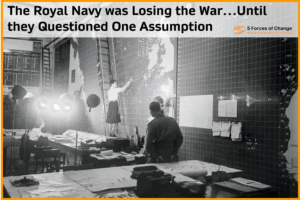When implementing change people often wonder about who to involve and how to involve them. They ask themselves questions like:
Do I need to involve everyone?
What if I involve people and they disagree with the direction of the change?
Won’t it just cause confusion if lots of people are asked their opinions?
Some of the underlying concerns are clear. We don’t want a huge cacophony of opinions, especially if they undermine our carefully crafted plans for change. Also, consulting with lots of people is a time-consuming and complex task.
The answer to these questions depends, in part, on the nature and impact of the change. The greater and more fundamental the effect of a change is on the people concerned, the more time and effort is required to create a sense of ownership among the people affected. A cultural shift or transformational change requires time and effort put into winning over hearts and minds if it is to stand any chance of success. A small change affecting only one small group of people in a minor way requires considerable less effort – open dialogue about the change with those affected may be sufficient to create the desired sense of ownership.
One question that people need to be clear on is what is meant by ‘involvement’, especially where change affects large numbers of people. In big organisations, involvement may entail actively involving a relatively small group of representatives each of whom speaks on behalf of a different part of the organisation or a different level in the hierarchy.
What if the people you involve disagree with the change? The key to engaging people with your change is to help them work out for themselves the logic behind your decisions. Help them understand the ‘why?’ of change before getting into the what. If you do the job right, once they understand ‘why’ they will work out the ‘what’ themselves. If most people disagree with the change you will need to reconsider your approach or try harder to explain it!
Once the ‘why’ and the ‘what’ are agreed, there is a great opportunity to involve people in working out how the change should be implemented in their part of the organisation. This is especially important when the ‘why’ and the ‘what’ are preordained, such as in a legislative change. The chances are that the people who are affected by your change will have the best ideas about how to make it work in practice – so there is a two-fold advantage to you in listening carefully to them; great ideas and increased ownership.
When a change is fundamental, you do need to involve everyone affected. If this means involving hundreds or thousands of people then so be it. You can’t make them all part of the project team, but everyone needs the opportunity to discover the ‘why’, ‘what’ and ‘how’ of change. Otherwise, you run a major risk derailing your plans.
For more on this see https://5forcesofchange.com/offer/






